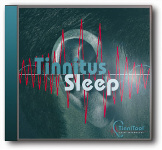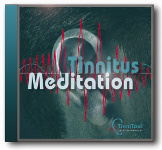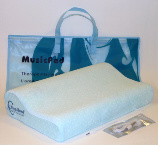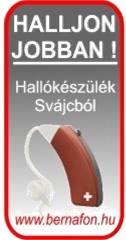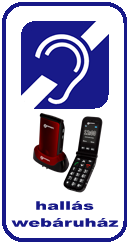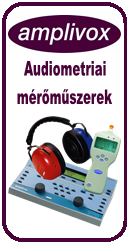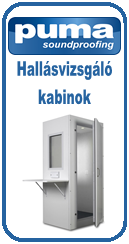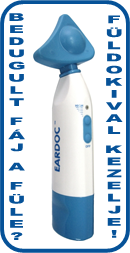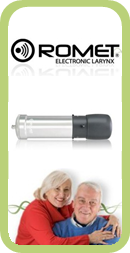Referenciák - a fülzúgás gyógyításáról
Tanulmányok, tanúsítványok és riportok termékeinkről
Klinikai tanulmányok a lézer - tinnitus témáról- eredeti nyelven
Evaluation of the customer satisfaction among users of the MedicLaser+TinniTool
IHA-GfK, Finn Andersen, Gabriele Deterville, ISO-certified (ISO-9001), in accordance with the standards of Swiss-Interview
"SThe IHA-GfK is the most renowned institut of market study in
Switzerland. The results given and statements made in this presentation
correspond 100% to the data collected and are fully valid.
A total of 141 patients were interviewed, afther the treatement
of MedicLaser+TinniTool. The results are very success-promising, since
it can be assessed that other therapies known in the market are much far
from these values.
The Soft Laser TinniTool is used to treat tinnitus in 96% of
cases. 56% do not know the cause of this complaint. The main causes of
the complaint were named as illness, stress and work, as well as serving
in the armed forces. 42% of the respondents had used the Soft Laser
TinniTool for 3 months. For 65% of those affected, the complaint had
been reduced by up to 25%, for 20% between 25% and 49% and, for 9%, by
50%-100%. The longer the period of use, the greater the success of the
treatment. On a scale of 0 to 9, satisfaction with the Soft Laser
TinniTool achieved an over average of 4.8. Satisfaction with the Soft
Laser TinniTool increased in proportion to the length of use as well as
with the extent to which the complaint had been reduced. 18% also used
the Soft Laser Tinnitool for other forms of treatment, such as for
joints, acne, scars and arthrosis. The satisfaction of those respondents
who had also used the Soft Laser TinniTool for other forms of treatment
achieved overall a good score of 6.38 on a scale of 0 to 9. Overall
satisfaction with the Soft Laser TinniTool increased with length of use.
54% of the respondents would buy the Soft Laser TinniTool again. 67%
would recommend the Soft Laser TinniTool to others."
Az eredeti tanulmány megtekintéséhez kattintson ide.
Double-blind study for low-level-laser-therapy in patients with chronic cochlear dysfunction
Dr. Stefan Tauber et al., HNO-Universitätsklinik und Laser Forschungslabor, Universität München
"In a double-blind placebo-controllesd study low-level-laser
light was applied to 175 patients with chronic tinnitus. The patients
received 3 single irraditations with different diode-laser with 635-830
nm and dosages from 4 to 100 Joule/cm2.
Low-level laser therapy for chronic tinnitus has been well
tolerated without side effects. In general higher dosages caused to a
stronger attenuation of tinnitus.
In comparison to placebo:
- tinnitus loudnes is improved by laserlight of 780 nm
- tinnitus is attenuated by laserlight between 690 and 830 nm concerning
visual analogue scales of 5 different parameters.
- total tinnitus score has been improved by irradiation with laserlight
of 635 up to 830 nm.
Regarding those results, tinnitus-laser offers an innovative ans secure
way of effective tinnitus treatment in patients with chronic tinnitus.
Tinnitus-laser are a new therapeutic system for chronic cochlear
tinnitus without risk of side-effects."
Az eredeti tanulmány megtekintéséhez kattintson ide.
Comprehensive therapy of patients suffering from Tinnitus
M. Prochazka, R. Tejnska
"37 patients suffering from tinnitus (age 18-86 years) were
treated in three ways: 1. Rehabilitation: mobilisation, physical
training, physiotherapy. 2. Same as 1 but with placebo laser added. 3.
Same as 1 but with functional laser added. Laser used was 830 nm 300 mW.
2-3 treatments per week were given, total 10 treatments. Treatment
protocol: 90 J/cm2 CW on mastoideus, 45 J/cm2 5 Hz on mastoideus, 50
J/cm2 CW on acoustic duct, 25 J/cm2 5 Hz on acoustic duct. Tebokan Egb
761 ginko medication was added to treatment. Results were classified as
no effect/less than 50% relief/more than 50% relief/no more tinnitus.
The percent wise outcome for the three groups was: 1.29.4/44.1/17.6/8.9
2. 25.8/48.4/25.8/0 3. 19.4/19.4/35.5/25.8 Auris Nasus Larynx. 1997; 24
(1): 39-42.
In an extended study over 3 years Prochazka [1263] evaluated the
effect of laser in a group of 200 patients. These patients were taking
gingko biloba preparations (73%) or Betahistadine (39%) and also had
physical therapy, mainly directed at the neck vertebrae. Laser therapy
was performed with a 300 mW GaAlAs laser, 75 J/cm2 into the ear and 135
J/cm2 behind the ear. The outcome was: no more tinnitus 26%, more than
50% relief 43%, less than 50% relief 15%, no effect 16%. In addition a
group of 31 patients were selected for a double blind study where the
same therapy as above was performed, but one group received placebo
laser. At 6 months the outcome was as follows, with laser/no laser: no
more tinnitus 25.8%/0.0%, more than 50% relief 35.5%/25.8%, less than
50% relief 19.4%/48.4%, no effect 19.4%/25.8%."
Tinnitus and vertigo
Jan Tunér, DDS Laser-Medical Society Grängesberg, Sweden
"A new and promising indication for laser therapy is tinnitus.
This inner ear disease is a growing problem in noisy modern society and
the number of persons suffering from tinnitus is increasing. Traditional
treatment for tinnitus is psychological support or various masking
procedures. Acupuncture and ginko extracts have been tried with limited
success. Laser therapy alone offers a new and promising treatment
modality.
The correlation between tinnitus/vertigo and cranomandibular
disorders (CMD) has been known for quite some time, yet few dentists
seem to be aware of this. It is not natural for the dentist to ask, nor
for the patient to inform the dentist about such a situation since it
does not appear to be a dental indication. However, quite a number of
tinnitus/vertigo patients will be relieved of their symptoms if a proper
CMD treatment is performed. Low level lasers have been used to treat
tinnitus patients with reasonable success, if sufficient energy and
suitable treatment technique is used. These lasers have also proved
themselves successful in the treatment of CMD. It is obvious, therefore,
that low level laser therapy is an appropriate treatment modality for
the yet undefined subgroup of tinnitus/vertigo patients with a CMD
background. Laser therapy will reduce pain levels, ease muscular spasms
and revert the vicious circle."
Transmeatal cochlear laser (TCL) treatment of cochlear dysfunction: a feasibility study for chronic tinnitus.
Tauber S, Schorn K, Beyer W, Baumgartner R., Department of Otolaryngology, Ludwig-Maximilians-University of Munich
"Low-level-laser-therapy (LLLT) targeting the inner ear has been
discussed as a therapeutic procedure for cochlear dysfunction such as
chronic cochlear tinnitus or sensorineural hearing loss. Former studies
demonstrate dose-dependent biological and physiological effects of LLLT
such as enhanced recovery of peripheral nerve injuries, which could be
of therapeutic interest in cochlear dysfunction. To date, in patients
with chronic tinnitus mastoidal and transmeatal irradiation has been
performed without systematic dosimetric assessment. However,
light-dosimetric studies on human temporal bones demonstrated that
controlled application of laser light to the human cochlea depends on
defined radiator position within the external auditory meatus. This
feasibility study first presents a laser application system enabling
dose-controlled transmeatal cochlear laser-irradiation (TCL), as well as
preliminary clinical results in patients with chronic cochlear
tinnitus. The novel laser TCL-system, consisting of four diode lasers
(lambda=635 nm-830 nm) and a new specific head-set applicator, was
developed on the basis of dosimetric data from a former light-dosimetric
study. In a preliminary clinical study, the TCL-system was applied to
35 patients with chronic tinnitus and sensorineural hearing loss. The
chronic symptoms persisted after standard therapeutic procedures for at
least six months, while retrocochlear or middle-ear pathologies have
been ruled out. The patients were randomised and received five single
diode laser treatments (lambda=635 nm, 7.8 mW cw, n=17 and lambda=830
nm, 20 mW cw, n=18) with a space irradiation of 4 J/cm2 site of maximal
cochlear injury. For evaluation of laser-induced effects complete
otolaryngologic examinations with audiometry, tinnitus masking and
matching, and a tinnitus-self-assessment were performed before, during
and after the laser-irradiation. The first clinical use of the
TCL-system has been well tolerated without side-effects and produced no
observable damage to the external, middle or inner ear. Changes of
tinnitus loudness and tinnitus matching have been described. After a
follow-up period of six months tinnitus loudness was attenuated in 13 of
35 irradiated patients, while two of 35 patients reported their
tinnitus as totally absent. Hearing threshold levels and middle ear
function remained unchanged. Further investigations by large
double-blind placebo controlled studies are mandatory for clinical
evaluation of the presented TCL-system and its therapeutic effectiveness
in acute and chronic cochlear dysfunction. Used by permission of the
Czech Society for the Use of Laser in Medicine."
Low-energy laser radiation in the combined Treatment of sensorineural hearing loss and Meniere's disease
Pal'chun VT, Lapchenko AS, Kadymova MI, Kucherov AG.
"59 patients with neurosensory hypoacusis and 45 with Meniere's
disease underwent helium-neon laser intra- or supravascular radiation of
blood. The treatment proved effective in acute neurosensory hypoacusis
and Meniere's disease."
Light dosimetry and preliminary clinical results for low level laser therapy in cochlear dysfunction.
Dr. Beyer W et al.
"The light distribution inside the cochlear windings produced by
irradiation of the tympanic membrane was quantitatively measured ex
vivo for wavelengths of 593, 612, 635, 690, 780 and 805 nm by means of
video dosimetry. The transmission of light across the tympanic cavity
and the promontory depends strongly on the wavelength. Spatial intensity
variations of a factor of 10 and more inside the cochlear windings have
been measured. The clinical study was performed with 30 patients
suffering from chronic permanent tinnitus. 5 irradiations within 2 weeks
each with a space irradiation of 4J/cm2 were applied at the cochlear
position to be treated. Diode lasers of 635 or 830 nm, 15 patients each,
were used. During and after irradiation there was no significant change
of hearing. However, 40% of the patients reported a slight to
significant attenuation of the tinnitus loudness of the treated ear.
There was no difference between the two wavelength groups."
Infrared laser applied into the meatus acousticus
Prof. Dr. Shiomi [686]
"Has investigated the effect of infrared laser applied directly
into the meatus acousticus, 21 J, once a week for 10 weeks. The result
of this non-controlled study is as follows: 26% of the patients reported
improved duration, 58% reduced loudness and 55% reported a general
reduction in annoyance. The same author [687] has also examined the
effect of light on the cochlea using guinea pigs. Direct laser
irradiation was administered to the cochlea through the round window.
The amplitude of CAP was reduced to 53-83% immediately after the onset
of irradiation. The amplitude then returned to the original level. The
results of this investigation suggest that laser therapy might lessen
tinnitus by suppressing the abnormal excitation of the eighth nerve of
the organ of Corti."
Ex-vivo laser penetration study
Dr. Tauber, Dr. Beyer [1091]
"Has performed an ex-vivo laser penetration study. Based on
these findings it was possible to calculate the energy needed to obtain a
dose of 4 J/cm2 in the cochlea itself. Irradiation via the mastoid
showed values 103 to 105 times smaller (depending on wavelength) than
irradiation through the tympanic membrane. 30 patients were treated five
times within 2 weeks. One group was irradiated with 635 nm diode laser,
the other with 830 nm diode laser. By self-assessment around 40% of the
patients reported a slight to significant attenuation of the tinnitus
loudness of the irradiated ear."
Average duration of tinnitus of 10 years
Dr. Hahn [1310]
"Examined 120 patients with an average duration of tinnitus of
10 years. The patients underwent pure-tone audiometry, speech audiometry
and objective audiometry tests. The intensity and frequency of tinnitus
was also determined. EGb 761 was administered 3 weeks before the start
of laser therapy. The patients underwent 10 sessions of laser therapy,
each lasting 10 minutes. An improvement in tinnitus was audiometrically
confirmed in 50.8% of the patients; 10 dB in 18, 20 dB in 22, 30 dB in
10, 40 dB in 6 and 50 dB in 5 patients."
